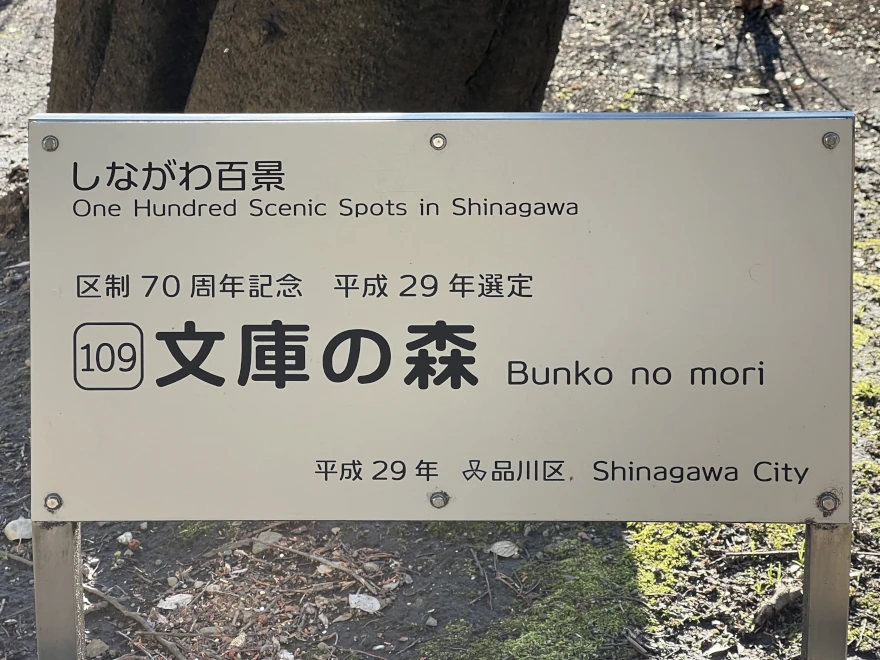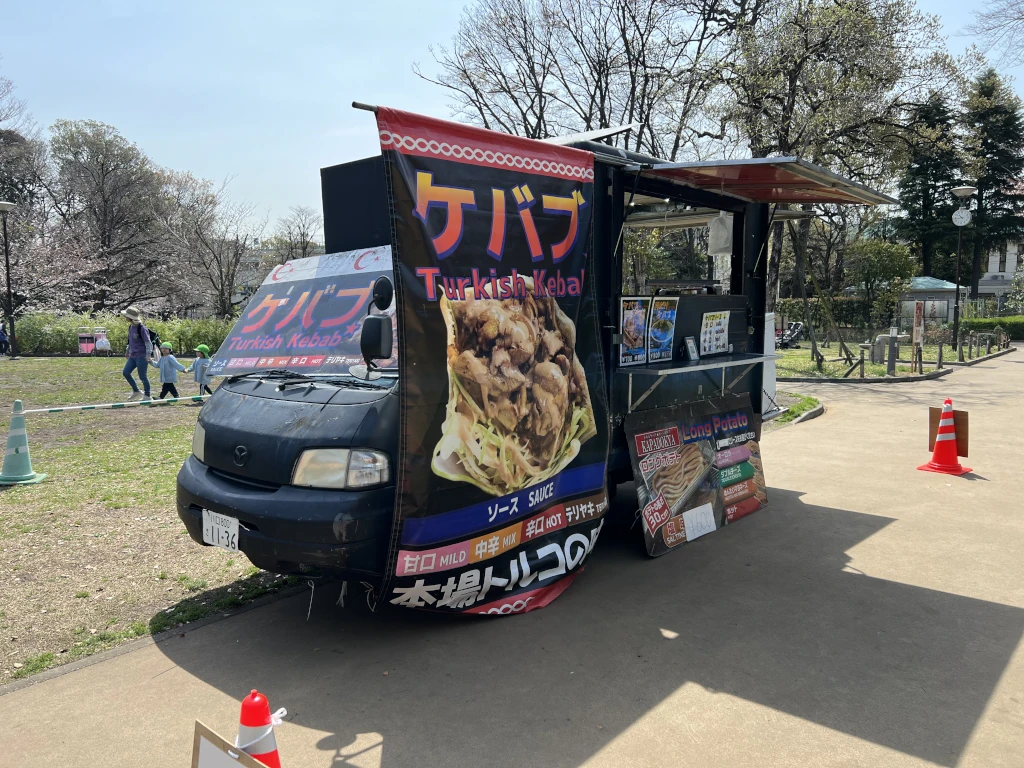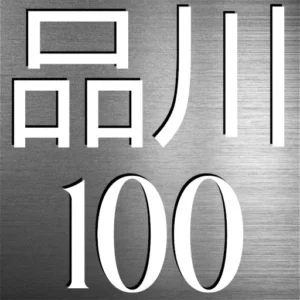📚 Bunko no Mori – From Daimyō Estate to Literary Forest
🏯 From Edo Garden to Mitsui Bunko
The land now known as Bunko no Mori was, like nearby Togoshi Koen, once part of the residence and garden of the Hosokawa clan, powerful daimyō of the Kumamoto domain. After the Meiji Restoration, the estate passed into private hands and later became part of the Mitsui Zaibatsu’s document archive project.
📦 Mitsui Bunko and the Daini Shoko
In 1918, the Mitsui family relocated their editorial department here from Nihonbashi and established the Mitsui Bunko. They built reinforced concrete archive buildings, including the still-surviving Daini Shoko (Second Archive Building). After World War II, during the breakup of the zaibatsu, the site was sold. In 1951, the Japanese government purchased the land, and it became home to national historical and literary research institutions.
📚 A Home for Literature and Archives
From 1972 to 2008, the site housed the National Institute of Japanese Literature and its archival wing. These institutions supported the preservation of historical manuscripts and literary research. In 2008, they relocated to Tachikawa City. The site, with its trees and pond intact, was returned to Shinagawa Ward.
🌳 Reborn as a Park with Purpose
Bunko no Mori opened in 2013 as a disaster-ready public park and cultural green space. The name—“Forest of the Archive”—honors the legacy of Mitsui Bunko. At its heart is the preserved Second Archive Building, now a disaster supply depot and registered tangible cultural property. This rare prewar reinforced concrete building survived the Great Kantō Earthquake with little damage and stands as a monument to both history and resilience.
🌿 A Park in Four Zones
- 水辺の広場 (Waterside Plaza): A zigzag bridge over a pond with aquatic life—also an emergency water source.
- 陽だまりの広場 (Hidamari no Hiroba): A sunny lawn planted with flowering groundcover and open skies.
- こもれびの広場 (Komorebi no Hiroba): A quiet grove under tall trees, with woodchip paths and dappled light.
- 憩いの広場 (Ikoi no Hiroba): A large grassy meadow for rest, recreation, and assembly during disasters.
The park is open-access and fence-free, designated as a wide-area evacuation space. It includes 24 emergency-use manhole toilets, wells, cisterns, and a fire brigade hut. The buildings and paths were carefully designed to preserve the original terrain and trees while serving the community in daily life and disaster response.
🎉 Community Events & Park Usage
Bunko no Mori regularly hosts community-focused events that reflect its dual role as a green oasis and designated evacuation site. Verified examples from recent years include:
- Sustainable Festival in Togoshi: Held in autumn, this annual event includes a lively flea market on the Bunko no Mori grounds, eco-friendly product stands, food stalls, and sustainability-themed workshops organized by Shinagawa Ward and Ecoルとごし.
- “Hot Tech Tech” Walking Event: Community health event featuring group walks between Bunko no Mori and Togoshi Park, promoting physical activity among residents. Occurs in spring and is supported by local welfare groups.
- EcoL Festival (Autumn 2024): A district-wide green event that has included pop-up stalls within Bunko no Mori as part of the larger Ecol Togoshi initiative.
These seasonal events usually take place in spring, early summer, and late autumn. They are coordinated by the Environment Department of Shinagawa City, local town associations, and Ecoルとごし, a community-led environmental learning center adjacent to the park.
In daily life, the park is a popular local spot for joggers, children, and seniors. The running loop, sunny lawns, and shaded paths make it a well-used destination for casual recreation. Morning walks and nature appreciation remain part of its quiet appeal.
While the park is not known for religious or ceremonial functions, its active integration into ward-wide sustainability and wellness initiatives gives it a vital role in the local community calendar.
📍 Visitor Information
- Address: 1-16-23 Toyomachi, Shinagawa-ku, Tokyo
- Access: 2-minute walk from Togoshi Park Station (Tokyu Oimachi Line)
- Open: 24 hours
- Admission: Free
- Facilities: Bicycle parking, benches, pond, lawn, emergency equipment
🧭 Where is it?
| what3words | ///fells.flinch.gravy |
| latitude longitude | 35.611457, 139.721454 |
| Nearest station(s) | Togoshi Park Station (Oimachi Line) Togoshi Station (Asakusa Line) Shimoshinmei Station (Oimachi Line) Togoshi Ginza Station (Ikegami Line) |
| Nearest public conveniences | Park toilets (men’s, women’s, and accessible) in the corner opposite the Koban. |
Show me a sign.

The sign is east of the pond.
Withervee says…
The first of the replacement spots for Ebara district following the 2016 re-election. It’s a nice enough park. Quite busy throughout the day when the weather is good. It even has an occasional kebab van.

If you have children challenge them to find all 24 of the emergency-use manhole toilets. Then you can sit on a bench and get some quality scroll time on your smartphone. (They are very easy to find if you know where to look.)
Site Character
- Lifestyle 生活 (Seikatsu): ✔️
- Historical Significance 歴史 (Rekishi): ✔️
- Atmosphere/Natural Features 風土 (Fūdo): ✔️
Who in their right mind would vote for this?
- Readers and writers
- Quiet walkers
- Local history buffs
- Park-bench poets
- Emergency planning nerds
Further reading
Shinagawa City Official Website-Opening Day
Agency for Cultural Affairs – Cultural Heritage Online listing for Former Mitsui Daini Shoko (Second Archive Building)
National Cultural Properties Database (kunishitei.bunka.go.jp) Online listing for Former Mitsui Daini Shoko (Second Archive Building)
While you’re there…
Explore nearby Togoshi Koen or look around Togoshi Ginza Shopping Street.

